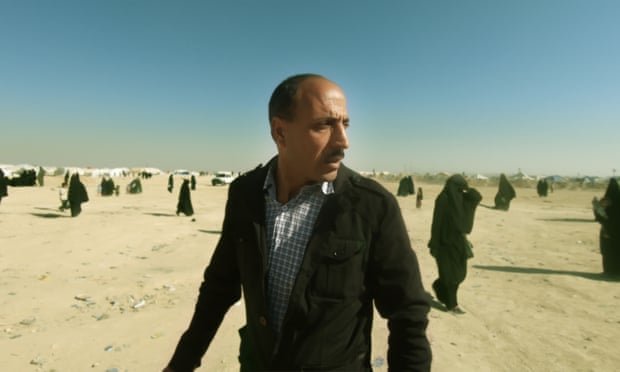Sabaya
A shocking and riveting documentary, SABAYA showcases a group of foreign-funded volunteers who risk their own lives to save Yazidi women and girls held hostage in one of the most volatile camps in the world. Behind these brave men is an ethically questionable and morally bankrupt project to save an oppressed community. In the film, the volunteer leaders are portrayed as caring and even noble men of faith. As they go about their daily mission to save these innocent girls, they are depicted as religious figures sent from God. But after risking their lives, they are guilty of crimes against humanity - the crimes that so many other foreign volunteers have been convicted of committing.
One of the most disturbing features of this film is its treatment of gender issues. Although the film portrays some Yazidis as being involved in the sex slave trade, it goes out of its way to depict male victims as angels fallen from heaven. This depiction goes against the prevalent beliefs and stereotypes of gender roles in the west, which are often used to justify the targeting and torture of women and girls in the Middle East and Asia. Through the lens of this film, audiences are invited to question why such terrible crimes are still happening.
The film was filmed in three different locations across the Middle East: the ancient kingdom of Abu Dhabi, the United Arab Emirates, and Saba, located in northern Iraq. It was screened in cinemas throughout the Muslim world but was denied a release in some countries due to its graphic content. The film was eventually released with some cuts but the controversy over its depiction of gender issues and the apparent endorsement of child sexual slavery created sufficient public pressure for the filmmakers to remove some of the more offensive scenes. It has now been released to movie theaters all around the world.
Sabaya was produced by independent film director. They worked with local experts in the production and had input from a large number of people while making the movie. Local residents were consulted as well in an effort to make the movie more family-friendly and non-offensive. The result is a remarkable portrayal of life in the Middle East - a common factor shared by most of the best independent films of this era.
A professional way to get the desired effect for a film is to employ a local artist to draw or paint on the body images that are used. This is a very good method of avoiding offending the sensitivities of certain communities, as is the case in the case of the Islamic and Jewish faiths. However, since this film was intended to be shown in a predominantly Muslim country, the filmmakers relied on traditional methods of Muslim art to decorate their bodies. These included decorated hijabs (a kind of headdress) and beautiful, symbolic silks. However, it must be noted that some of these elements were decidedly western in appearance. There was a great deal of consultation with the local art community before the movie was released.
Some filmmakers who have tried to make movies in the Middle East without seeking the consent of tribal leaders have met with resistance from those groups. This is because the traditional norms of local society in areas such as Iraq and Afghanistan are very different from those of Sweden. Tribal elders in both countries can act as gatekeepers to get filmmaking projects to pass through their regions without proper permission from tribal leaders.
Two films from 2021 that earned accolades in Sweden and abroad were "A Taxi Driver" and "The Blind Lady." In Iraq and Afghanistan, which are also experiencing violent conflict, movie producers might face stiff opposition if they attempt to release movies that are deemed too Westernized. The two Sabaya movies that are currently in pre-production employ a distinctly Islamic aesthetic for the characters in the movies. In addition, the concept of sabaya has been expanded to include such elements as music and dance. A third potential challenge is whether or not local producers will allow the film crews to use local places and cultures as references for the Sabaya story.
One of the most touching elements in both "The Blind Lady" and "A Taxi Driver" is how the lead character's father disciplines his young son for being gay. Though traditional norms frown on homosexuality in the Arab world, in this film the father uses various traditional forms of disciplining the son, which inclusdes physical abuse. Although the act itself is condemned by sharia law in most countries, the father's use of force shows just how much men in certain societies still fear the realization of a woman entering the home of a man. The use of the term "sabaya" to describe a female gay person in Arab society gives hope that even young Arabs are liberated to depict, especially on screen, who they are.


Congratulations @siirif! You have completed the following achievement on the Hive blockchain and have been rewarded with new badge(s) :
Your next target is to reach 80 posts.
You can view your badges on your board and compare yourself to others in the Ranking
If you no longer want to receive notifications, reply to this comment with the word
STOPTo support your work, I also upvoted your post!
Check out the last post from @hivebuzz:
Support the HiveBuzz project. Vote for our proposal!